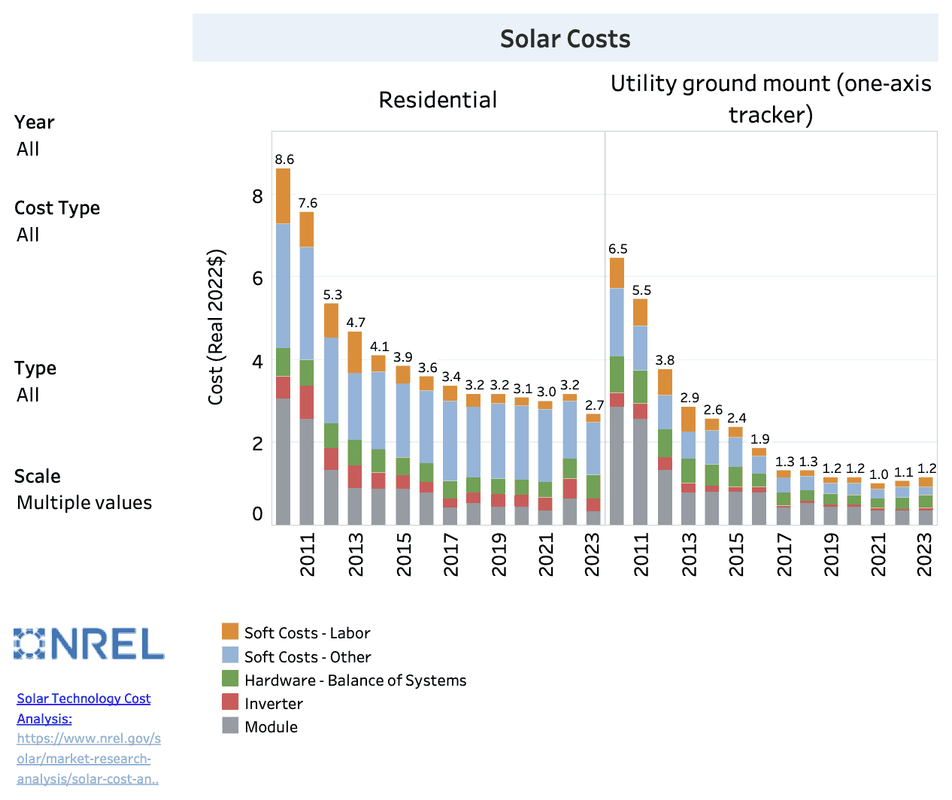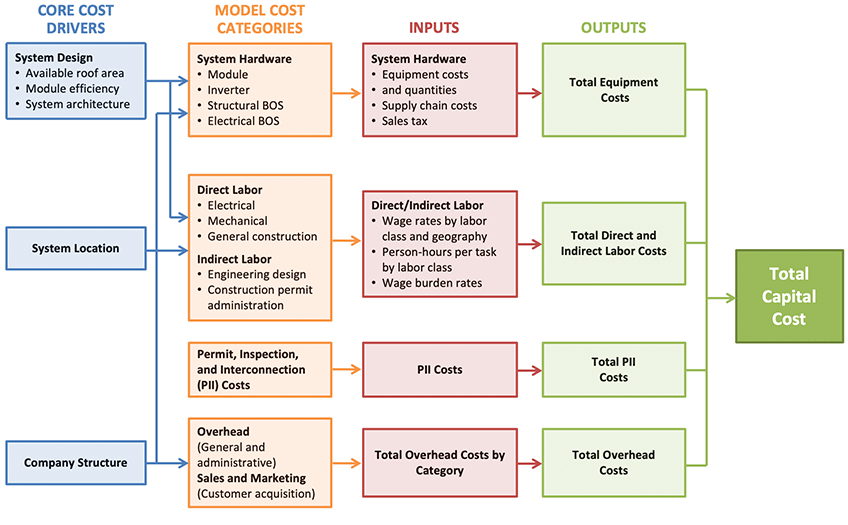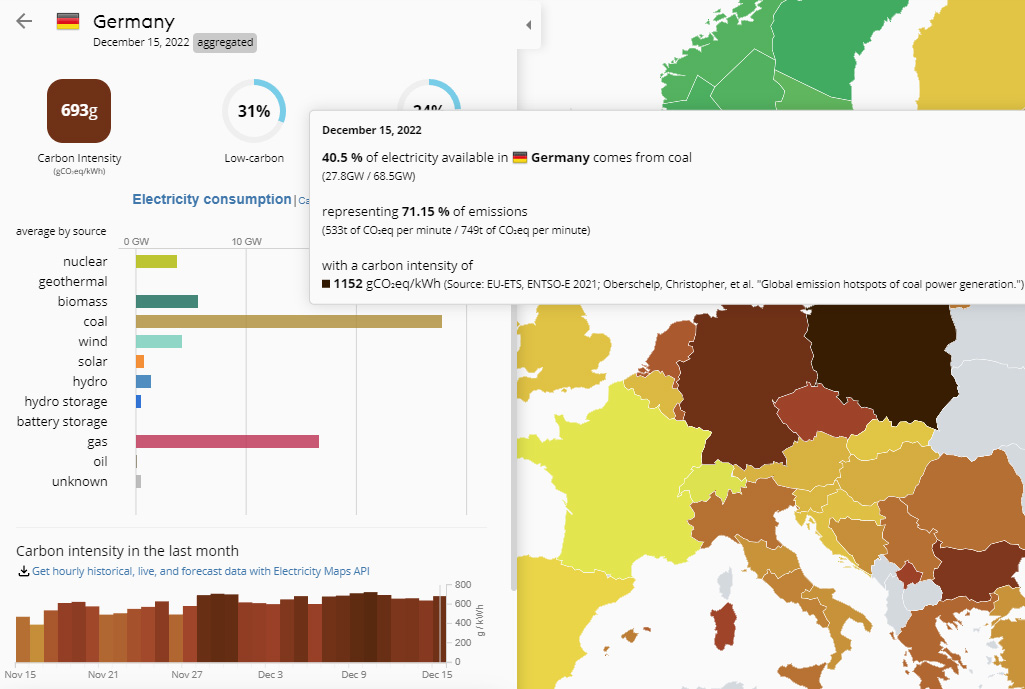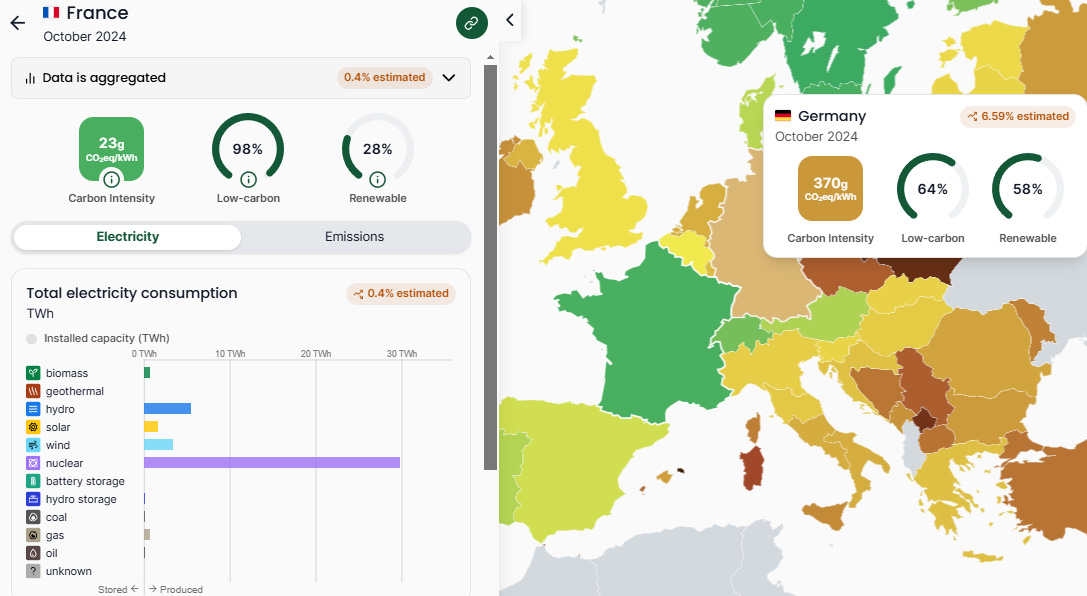Environment & Energy
Related: About this forumNREL: Residential and Utility Solar Costs (2010 - 2023)

As you can see, installing “Utility Solar” (even with a one-axis tracker!) costs less than ½ what it costs to install “Residential Solar."
Why? Partly because of quantity pricing of course, but, for "Residential Solar," “Soft Costs” now trump the cost of the actual hardware!
genxlib
(5,691 posts)Every single location is a custom design due to location, roof shape, roof slope, roof type, tree cover, wind loads, jurisdiction, etc. And that doesn't even get into the complexities of wiring into the electrical.
That is what is meant my the "soft" costs.
Those costs are more easily spread out over large scale projects
Still worth doing if your roof is suitable for it. Mine is not very conducive due to the shape and direction
OKIsItJustMe
(20,763 posts)Oh, and I’m surrounded by shade trees… I was among the first in line, signed up and waiting for my “Community Solar,” getting monthly updates waiting for the 1st “farm” in the state to come on line.
However, the point I could have made more explicit was that the days when the hardware was the expensive part are behind us, and even the “soft costs” are coming down. The overall cost for installing “Residential Solar” in 2023 is a little less than ⅓ what it was in 2010.
NNadir
(34,664 posts)And of course it avoids the costs of the required redundancy, both external (human health, integrity of the atmosphere, land use, and reliance on dangerous fossil fuel backup...etc...) and internal (higher O&M costs for the dangerous fossil fuel backup systems.)
OKIsItJustMe
(20,763 posts)See here for example: https://www.nrel.gov/docs/fy24osti/91209.pdf
NNadir
(34,664 posts)...which are different things entirely.
Of course, we could chat about direct costs, as well as "external costs," the latter being costs about which antinukes generally couldn't care less, costs to health and the environment.
I note that antinuke "renewable energy will save us" nirvana, Germany, is deindustrializing because of high energy prices, because they couldn't get dangerous natural gas, even though so called "renewable energy" is advertised as "cheap."
Once dominant, Germany is now desperate
High energy prices, especially after Germany had to divest from Russian gas following Vladimir Putin’s invasion of Ukraine in 2022, are a common grumble among firms in a country where manufacturing still accounts for 20% of gross value added. That remains almost twice the figure for France, even though industrial production peaked in 2018 and has since sagged more quickly than elsewhere in the eu (see chart 1), especially in energy-intensive sectors such as steelmaking. Order books are down, and planned investments have been postponed or shifted abroad. The ceo of Thyssenkrupp, a lossmaking steelmaker, has said Germany is “in the midst of deindustrialisation”...
The article is from The Economist, where they say the bright side is that Germany is hanging on in what the reporter calls "green technology," wind turbines and electrolyzers. (You can always count on journalists to be unaware of the laws of thermodynamics.)
It's surprising that they lead in electrolyzers and still BASF had to shut its ammonia plants in Ludwigshafen because it couldn't get dangerous natural gas to make hydrogen, hydrogen being the main industrial reagent for ammonia production. They apparently no longer have the technology to do it the old way, from coal, which the Chinese use quite happily to make hydrogen.
German Deindustrialization Is A Wake-Up Call For U.S. Manufacturers
Many factors contribute to the skyrocketing costs in Germany for electricity and natural gas: Russia’s invasion of Ukraine and the resultant sanctions, as well as the destruction of Nord Stream pipelines, for example. But one of the biggest drivers has been Germany’s net-zero energy policy, Energiewende, and the country’s rapid move to variable renewables, wind and solar, for electric generation. They necessarily require backup generating capacity, since the wind doesn’t blow and the sun doesn’t shine all the time. That’s usually provided by fossil fuel or nuclear power plants, but Germany passed legislation in 2019 to shut down all its coal plants by 2038, and last year the country shuttered the last three plants in its once-formidable nuclear fleet (in 1990 nuclear provided a quarter of Germany’s electricity). As a result, the country has been forced to import electricity and natural gas at substantially higher prices.
The bold and italics are mine.
"The wind doesn't blow and the sun doesn't shine all the time?" They're kidding, right? Who knew?
At least they've agreed to stop funding Putin's war machine, as they did for most of the 21st century up to now.
I note that as is typical of antinukes, Germany rushed like madmen and madwomen to shut its nuclear plants, but not its coal plants; the responsibility for closing them has been left for a future generation with a bullshit "deadline" that will mean nothing in 2038. As for me, I'll take "by 2038" the same way I take all the predicted outbreaks of a so called "renewable energy" nirvana that spanned my overly long life, "by 1990," "by 2000," "by 2010," "by 2020."
It's not like antinukes give a flying fuck about the extreme global heating we now experience; burning "transitional coal" is "OK," extreme global heating is OK, (and of course, not "too expensive" ) but running nuclear plants with a long established record of high performance and safety is not OK.
Is it just me, or shouldn't there people who are not OK with that?
Count me in. I'm not OK with that. I give a fuck about extreme global heating even if the Germans clearly don't.
Have a pleasant evening.
OKIsItJustMe
(20,763 posts)
NREL's bottom-up cost modeling methodology, shown here for residential PV systems, considers a wide set of factors and many interactions between them.
These bottom-up models capture the impacts of economies of scale, efficiency, location, system design, and company structure on total costs. NREL uses these insights to develop roadmaps for future cost reductions and to provide context for cost variability observed in the market.
NNadir
(34,664 posts)Telling the teacher "this is what I meant" is useless if one wants a higher grade.
The graphic presented was of poor quality.
The point I made, which is being ignored, is that it doesn't make a hill of beans what equipment costs if it is unreliable, hence the high price of energy in antinuke heaven, extreme global heating hell, Germany.
OKIsItJustMe
(20,763 posts)(See here for example)
My greatest concern regarding renewables is seasonal variability. (e.g. in Upstate New York, in the Winter, the sun is lower in the sky and shines for fewer hours each day, than in Phoenix, AZ [for example.])
NNadir
(34,664 posts)...a Dukelflaute event in 2022 in that coal dependent antinuke hellhole Germany.
It's here: The Number of Tesla Powerwalls Required That Would Address the Current German Dunkleflaute Event.
For the calculations in this post, I will rely on the 30 day results found on the Electricity Map for Germany for the period from November 15, 2022 to December 14, 2022, during which the average continuous carbon dioxide intensity for Germany was 693 g CO2/kWh.
By contrast, over the same period, the carbon intensity of France, even though its once magnificent nuclear infrastructure is damaged by a dubious decision to defer maintenance and upgrades in order to fund the useless "solar and wind will save us" fantasy, still had a was 137 g CO2/kWh, roughly, in "percent talk" 19.8% that of Germany, or put it another way, German electricity is 505% dirtier than that of France.
Here is a graphic representation of the carbon intensity and sources of primary energy, focusing on the use of filthy and deadly coal, for German electricity generation in the period between November 15, 2022 and December 14, 2022

I will not rely as produce graphics for each energy source as I did in the previously referenced post, but for calculation figures, will rely on the the 30 day period these graphics represent.
It shows that the average continuous power output of German coal plants amounted to 27.8 GW. There are 24 hours in a day so for 30 days, the energy production from coal plants in Germany amounted to 24*30*27.8 = 20,016 GWh. The dangerous fossil fuel natural gas was the second largest producer in that antinuke heaven, Germany, producing 16.6 GW of average continuous power, by a similar calculation to that of coal, producing 11,952 GWh of electricity.
We have people here who still worship the fascist Elon Musk and his slave holding company Tesla, who are always carrying on happily about the industrial installation of Tesla Powerwalls®.
Here are the specifications of Tesla Powerwalls®: Specifications of Powerwalls®.
It is claimed they have a useable capacity of 13.5 kWh after being charged with 14 kWh of electricity, presumably at 25°C, with a putative thermodynamic efficiency - should you choose to believe it - of 96%. The maximum continuous power output is said to be 5 kW. The power requirements to match the combined coal and gas average continuous power of combined German coal and gas over the last 30 days, 44.4 GW would require 8,880,000 million Powerwalls®, to cover each day of Dunkelflaute; for 30 days, given that the wind wasn't blowing that much over that period, 266,400,000 Powerwalls®.
The specifications say that each Powerwall® weighs 114 kg, meaning that 30,369,600,000 kg of Powerwalls® would be required just for Germany.
According to Forbes, 15% of the weight of a Tesla Powerwall is cobalt, mined by Elon's happy Congolese slaves, meaning that the happy Congolese cobalt slaves would be required to mine and isolate 4,555,400 metric tons of cobalt to make Powerwalls® to cover this instance of Dunkleflaute with batteries.
This is 31.63 times as large as the world production of cobalt in 2021 according to the US Geological Survey
I'm sorry!!! I forgot to use "percent talk!" The demand for cobalt to cover month long Dunkleflaute in Germany observed in Nov-Dec 2022 would be 3163% the demand for all the world cobalt supply in 2021...
(I'm pleased to say that I identified Eloon as a fascist before it was popular around here to do so.)
Now, to favor storing energy when so called "renewable energy" remains trivial shows not only contempt for the laws of thermodynamics and a bourgeois fascination with wasting energy - in California they charge batteries while burning dangerous natural gas, meaning they have to burn more dangerous natural gas than they would without batteries, since charging and discharging batteries involves loss of energy - it also shows contempt for human beings.
But, of course, given the moral level I observe in antinukes - their tiresome handwaving in the face of a burning planet - this is no surprise at all.
I really, really, really, really believe that one should not be graduated from high school without being able to state, in simplified form - I'm not asking for understanding Boltzmann's derivations showing the nature of entropy - that storing energy wastes energy.
This is true of the hydrogen scam as well as the battery scam, by the way, storing energy wastes energy. I regard the hydrogen scam as slightly worse than the battery scam - the idea that we should mine the fuck out of the planet in service to stupid reactionary myths because people can't understand basic science - but not by much.
One really doesn't want to believe one hears this shit this late in the game, with the planet in flames, but still one does. It's awful.
By the way, since 2022, France repaired their reactors, and now routinely has a carbon intensity typically on the order of 50-55 grams CO2/kWh (as of this writing 6:29 EST (US) 11/22/24) 53 grams CO2/kWh compared with Germany's 347 grams CO2/kWh.
For the month of October 2024 France's carbon intensity was 23 grams CO2/kWh, compared to coal dependent hellhole Germany's 347 grams CO2/kWh.

The electricity map (accessed 11/22/24)
The contempt for humanity and for the environment shows through every time an advocate of the reactionary "renewable energy" fantasy makes excuses for its inability to address fossil fuels, not that they give a shit about fossil fuels. These advocates are only interested in attacking the last, best, hope of humanity, nuclear energy. They clearly don't give a fuck about fossil fuels.
Have a swell weekend.